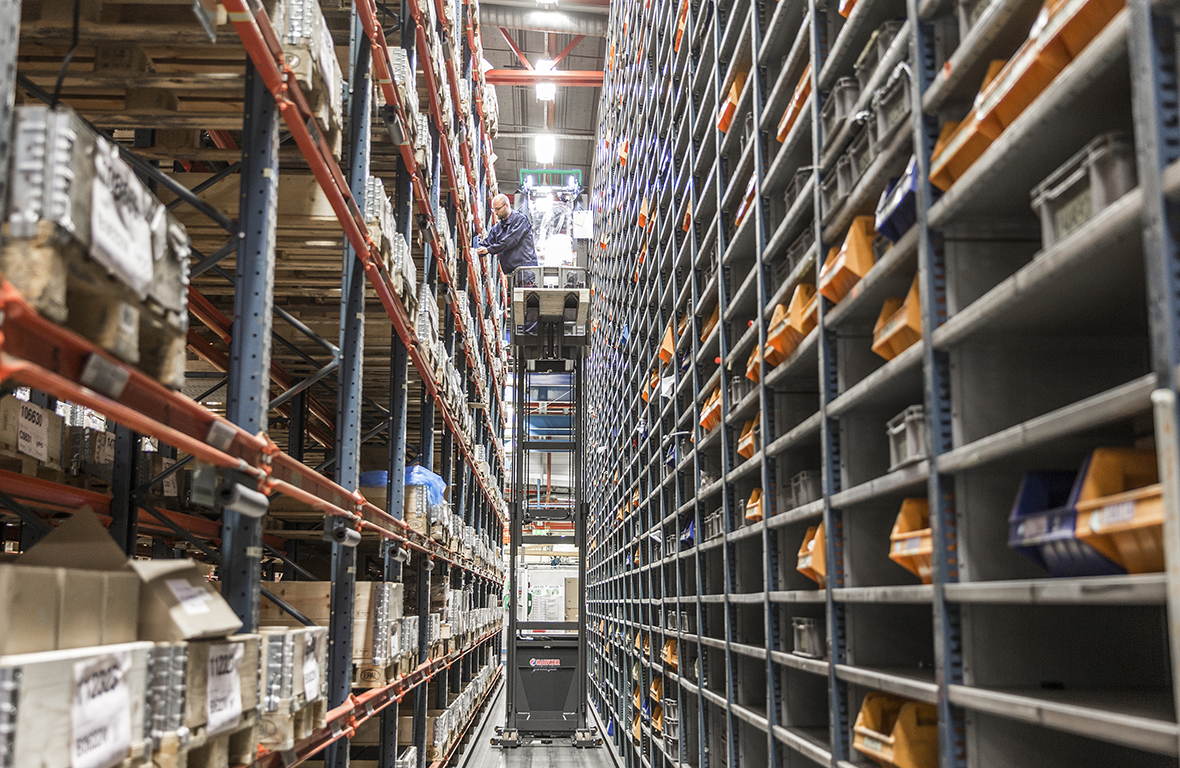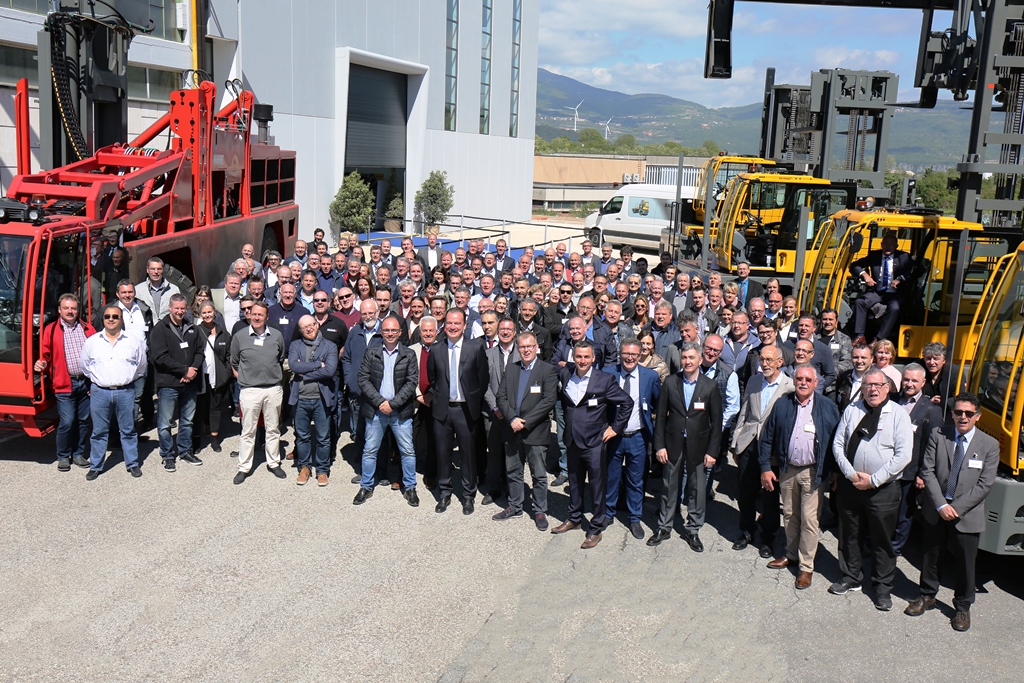Think outside of the box…Double-deep stacking could increase, under certain conditions, storage density by as much as 25%.
Mounting pressure from senior management towards ‘lean’ production has left many responsible for materials handling feeling themselves caught between a rock and a hard place.
With fewer resources and higher demands than ever before, streamlining production is daunting (to say the least). Although no two warehouses are the same, it’s important to remember that the efficiency of almost any warehouse can be enhanced with a little bit of time and effort.
A crucial element of unlocking your site’s profitability relies in determining the best racking system for your products. To ensure that the wisest decisions are made for your space, we highly recommend seeking the advice of a trusted supplier.
Rack ‘em up
The equipment you choose directly impacts upon the efficiency and profitability of your operation. To assist your decision-making, read on to find out about racking types, their functions and their best applications.
Free stacking
‘ Block Stacking’ of pallets, free of racking equipment, is the simplest – and cheapest – means of storage. This method is only workable when you are handling large amounts of the same product, allowing pallets of the same height to be stacked one on top of the other. Unfortunately, the ‘first in first out’ (FIFO) system is not really possible.
Block Stacking’ of pallets, free of racking equipment, is the simplest – and cheapest – means of storage. This method is only workable when you are handling large amounts of the same product, allowing pallets of the same height to be stacked one on top of the other. Unfortunately, the ‘first in first out’ (FIFO) system is not really possible.
Pallet racking
 Conventional pallet racks offer flexibility and are very user-friendly. They are easy to adjust and add to, and also allow easy access to each individual pallet. Although this is a cost-effective solution, it can require wide aisles of up to 3.5 metres, dependent on the type of forklift used.
Conventional pallet racks offer flexibility and are very user-friendly. They are easy to adjust and add to, and also allow easy access to each individual pallet. Although this is a cost-effective solution, it can require wide aisles of up to 3.5 metres, dependent on the type of forklift used.
Double-deep racking
 As the name suggests, pallets are stored two deep – meaning four pallets deep can be stored between aisles. Double racking requires a truck with telescopic forks and slightly larger aisle widths. Because of the need for fewer aisles, storage density can be increased by as much as 25%, dependent on the number of pallet spots.
As the name suggests, pallets are stored two deep – meaning four pallets deep can be stored between aisles. Double racking requires a truck with telescopic forks and slightly larger aisle widths. Because of the need for fewer aisles, storage density can be increased by as much as 25%, dependent on the number of pallet spots.
Narrow aisle storage
 When space is limited, this excellent solution allows for aisle widths as narrow as 1.8 metres. The system requires narrow aisle trucks. Pallets can generally be stored and retrieved more quickly than with conventional racking, because of the way narrow aisle trucks work. Aisle widths of even less than 1.8m are possible using ‘very narrow aisle’ (VNA) trucks which usually require a guidance system (wire, rail). But, remember: what you gain through specialisation you lose in flexibility.
When space is limited, this excellent solution allows for aisle widths as narrow as 1.8 metres. The system requires narrow aisle trucks. Pallets can generally be stored and retrieved more quickly than with conventional racking, because of the way narrow aisle trucks work. Aisle widths of even less than 1.8m are possible using ‘very narrow aisle’ (VNA) trucks which usually require a guidance system (wire, rail). But, remember: what you gain through specialisation you lose in flexibility.
Drive-in/drive-through racking
 This system is designed for warehouses with high running costs (eg heating, cooling) and a limited range of goods to handle. Trucks have the option of either driving into the racking to deposit and retrieve loads, or driving right through the racking, which eliminates the need for aisles – increasing storage capacity. Using a combination of pressure-free rack and compact block stacking, the system is particularly useful for storing seasonal goods.
This system is designed for warehouses with high running costs (eg heating, cooling) and a limited range of goods to handle. Trucks have the option of either driving into the racking to deposit and retrieve loads, or driving right through the racking, which eliminates the need for aisles – increasing storage capacity. Using a combination of pressure-free rack and compact block stacking, the system is particularly useful for storing seasonal goods.
Satellite storage
 In a satellite storage system, pallets are deep-stacked and removed by warehouse crane. Designed for sites with high picking turnovers, this automated system provides a quick and automatic retrieval method. But, the clear downside to this can be high capital costs.
In a satellite storage system, pallets are deep-stacked and removed by warehouse crane. Designed for sites with high picking turnovers, this automated system provides a quick and automatic retrieval method. But, the clear downside to this can be high capital costs.
Flow-rack storage
 Flow-rack storage offers a highly compact solution for high-frequency goods – though because of its sophistication, it demands a high capital outlay. This option is most suitable for pallet goods or goods in cartons.
Flow-rack storage offers a highly compact solution for high-frequency goods – though because of its sophistication, it demands a high capital outlay. This option is most suitable for pallet goods or goods in cartons.
Intelligent design
Warehouse space comes at a premium – and that expense looks set to continue increasing. To keep costs low and productivity high, every effort should be made to reduce floor space used, while taking full advantage of all the cubic space between the floor and ceiling.
Your products, warehouse layout and needs directly impact upon the types of warehouse racking needed. For this reason many successful operations rely on at least two storage handling systems, so don’t be surprised if your adviser suggests a combination of equipment for your site.
Our conclusion?
Racking heavily influences productivity, but don’t allow it to overshadow your environment. After all, it can only be as efficient as its setup. So, to maximise your efficiency, seek advice from a forklift truck supplier you trust. Their knowledge and experience will provide you with the best combination of racking and trucks for your application.


